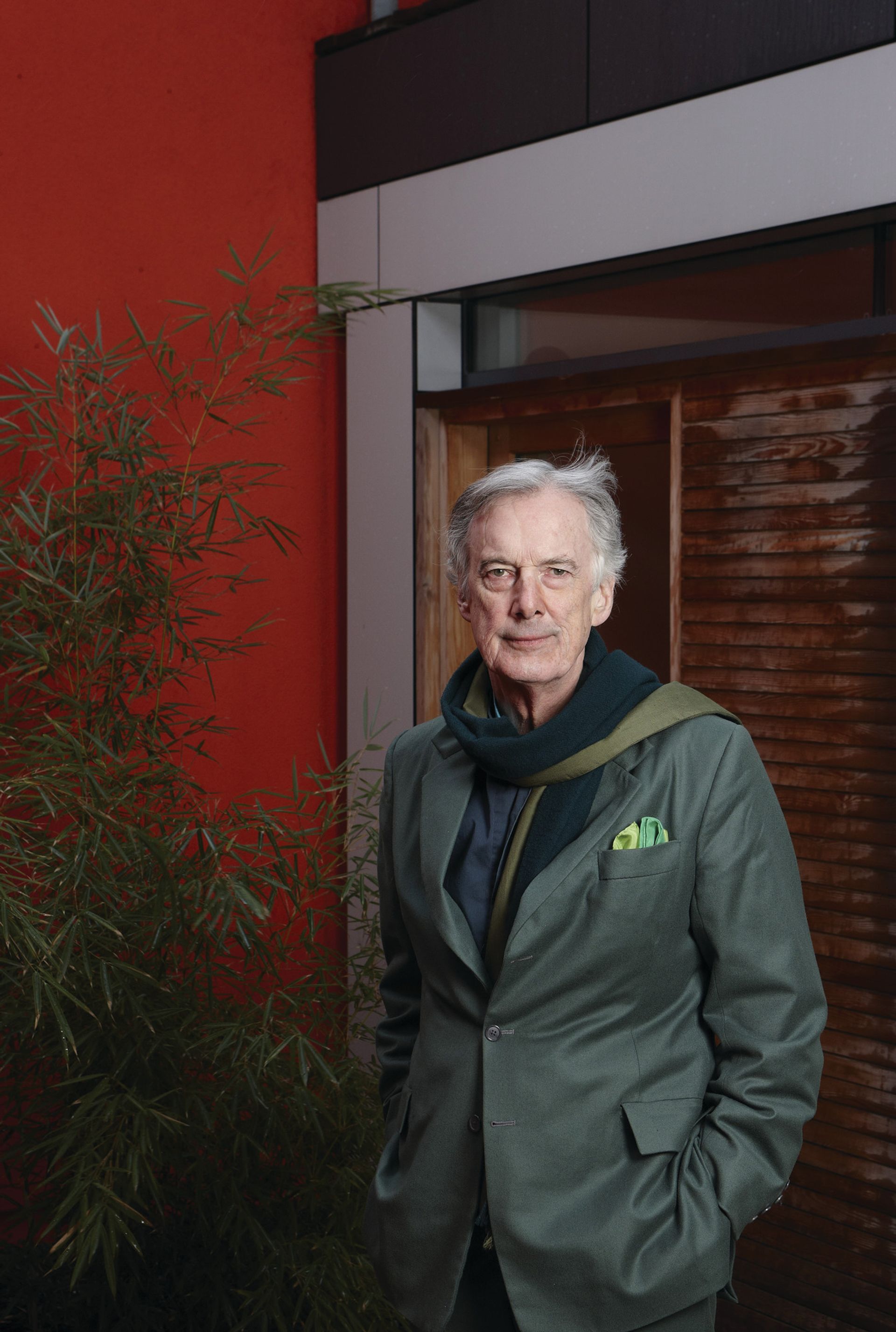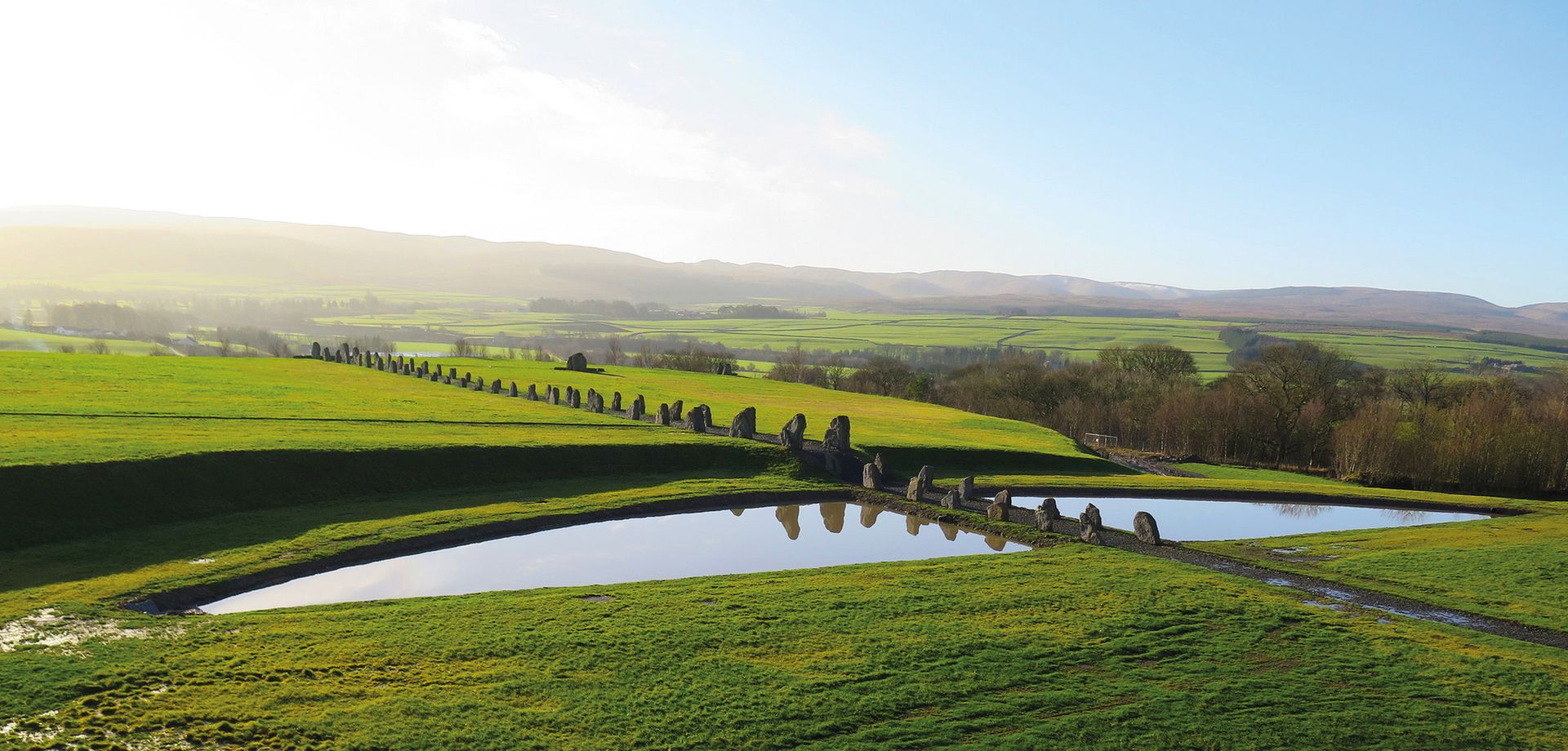Richard Scott, the tenth Duke of Buccleuch, is turning a negative into a positive with a massive regeneration project in Scotland’s Southern Uplands. Faced with the need to clean up a 55-acre site scarred by open-cast coal mining after the company mining the site went bust, the Duke—reputedly the UK’s largest private landowner—decided to transform the landscape into a park, complete with a vast, cosmic land work by the renowned US architect and land artist Charles Jencks. Crawick Multiverse, near Sanquhar, in Dumfries and Galloway, is due to open on 10 July.

The Duke, a long-time friend of Jencks, first brought the artist to the site in 2005. “It was a horror—desolate and depressing,” Jencks says. It was not until he climbed to the top of a ridge and saw a landscape thriving on opposition that inspiration struck. “I saw the uniqueness of the site, which has four ecologies compressed into an extremely small area: desert, rainforest, meadow and a ridge mountain walk. It was Beethovenian in its contrast.” Certain features are a direct result of mining, including the mountain ridge that was created by dumping excavated earth. Jencks calls it great art produced by accident. “In a way, nature does that,” he says, offering the US’s Grand Canyon as an example.
Jencks was hooked, but he faced another problem: what to do with a landscape that is so large it dwarfs anything placed in it. “A work by Antony Gormley would just disappear. You wouldn’t be able to find it,” he says. For an area this vast, a really big idea was needed. Fortunately, Jencks is never short of those. Crawick Multiverse—typically of his work—is cosmically oriented. It contains eight landforms: a 5,000-seat amphitheatre; the 400m-long, boulder-lined North-South Path, which splits the site down the middle; a Supercluster of abstract, triangular mounds; a stone Omphalos (in Greek mythology, the “navel” of the world); the Multiverse, a path made from mudstones, with carved lines representing different types of universe; the Belvedere lookout, topped with boulders in the shape of a hand and set alongside its inverted opposite, the Void; the Comet Walk; and two spiral galaxies (of Andromeda and the Milky Way), made from mounds that were formed when polluted earth was removed from the site.

Construction began in earnest in 2012. Jencks’s team included Alistair Clark, his head gardener, and the contractor Campbell Duncan, whom Jencks calls “the Jackson Pollock of machinery… like action painting, but Campbell was more action sculpture and mound-making,” he says. Around 99% of the 2,000 boulders used were taken from the site, with others coming from another of the Duke’s nearby properties and from Jencks. Various colours are represented: red, yellow, white and black. “They are wonderful sculptures; nature’s art, really. Nature is an artist if you know how to read her,” Jencks says.
A bargain at £1m
The project, funded by the Duke, cost £1m—a bargain, Jencks says, in today’s contemporary art market. He notes that the model for Gormley’s soaring sculpture Angel of the North (1998) cost the same amount. Alluding to the 20th-century architect Buckminster Fuller’s question to Norman Foster (“how much does your building weigh?”), Jencks asks: “How much does this land project weigh? I bet it’s the cheapest work of art ever produced if you consider art per pound,” he says, adding that £400,000 of the cost was spent on removing pollutants—the legacy of mining—from the soil.

“Tremor of awe”
The main goal of the project is to repurpose the land so that it can be used to help revive the local economy, which was hit hard by the downturn in the Scottish mining industry. A wide range of festivals—everything from music to agricultural machinery shows—could be staged in the park, and Jencks is confident that it will become part of the art-pilgrimage route, like popular sites such as the nearby castles of Caerlaverock and Drumlanrig. “In the past 20 years, a lot of people have realised that this negative situation has a positive possibility for the local community. You can create new value if you restore the site in a creative way,” he says.
In a statement, the Duke says: “The notion that a particularly obtrusive scar could, one day, through different eyes and bold remodelling, come to represent the mysteries of the universe was met by some with polite scepticism.” Several years later, however, “doubt has given way to wonder”, he says.
“Complete comprehension may elude us, but landscapes offer many layers of meaning, be they aesthetic, environmental or historical, and no one I know who has visited the Crawick Multiverse has experienced anything less than a physical tremor of awe.”

